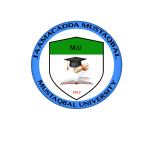Department of Midwifery
Midwifery Department of Mustaqbal University is committed to train qualified midwives who are designed to revert the alarming maternal and neonatal mortality rate in the country and region as well.
Rationale for the midwifery programme
Maintaining the health of the population remains a huge challenge that has impact on individuals, families and indeed on the whole economic development to many developing countries. Maternal and infant health continues to give great cause for concern in Somaliland; with one of the highest rates of morbidity and mortality in the world this issue affects every community. Not only do women have the right to live when fulfilling their childbearing role, but families do poorly when the mother is lost, infants usually die and young children often do not survive either.
The level of formal education and health status of a country’s population have direct influence on the national and economic development. Midwives & Nurses play an important role in in the well being of any country’s population since they may be the sole health providers in resource-constrained and wide geographical settings where they serve. The rapid growth and dynamic nature of medicine in general/nursing and midwifery in particular demands that midwives are trained in order to acquire and develop the capacity for creativity, independent clinical reasoning, problem-solving and decision-making skills that enable them to deliver high care quality services.
Due to the challenges brought about by civil war that has been in Somalia in the last two decades, there is a generalized acute shortage of trained health providers, especially nurses, at the various levels of the health system. MUSTQABAL University therefore has decided to develop a competency-based Midwifery curriculum to produce capable nurse professionals.
This curriculum is intended to prepare comprehensive Midwives who will be proficient in general nursing, midwifery, community health nursing, as well as other competences that are essential for giving holistic nursing care.
PROGRAMME OUTCOME
The outcomes of this four years program in midwifery include:
Become midwifery practitioners who provide safe, competent and timely care to women, their infants and families
Contribute to the reduction of maternal, neonatal and child morbidity and mortality
Act at all times with honesty, integrity and without discrimination to people whatever their ethnic group, faith, gender, nationality or culture
Work in collaboration with the community and with professional colleagues
Become lifelong learners who are able to reflect on and improve their practice and encourage and support others to do the same
Work toward the advancement of the profession of midwifery.
Program Duration
This is a four-year program. Every academic year consists of two 24-week semesters of 20 weeks for theory and 4 weeks for practical field attachment.
Admission Requirements
Admission criteria in health training programmes have far-reaching implications in education and training processes and the outcomes of such programmes, thus, the graduates and the quality of health services. Consideration of the admission requirements to the Community Health Nurse programme is in light of the prevailing health situation in Somalia.
Candidates for direct or in-service admission into the course programme must possess the stipulated qualification requirements in Somalia, and the equivalent, especially in neighboring countries.
Any student seeking admission from any MU Department of Nursing to pursue the course should fulfill the following requirements:
1. Be not younger than 18 years of age.
2. Submit secondary leaving certificate with minimum average marks of not less than 60% from recognized school and umbrella and passed the Somali Government centralized exam.
3. Application for admission.
4. Pay the registration and enrollment fees as per required.
5. Fill the application form fittingly.
6. Successfully pass the university entrance examination,
7. Bring the following documents with you:-
a. Original secondary certificate (both from the school & the government)
b. Original national identity card/passport/birth certificate
c. Two (2) certified clear sets of photocopies of (a) and (b)
d. Seven (7) certified passport sized photos
Assessment Approaches
Formative
Formative assessment is used as a bridge between learning and teaching. It allows instructors to gather real data about students as they work, then adjust their instruction to better serve students at their current learning level. In nursing education, formative assessment has been proven to be highly effective not only for student learning, but for faculty teaching and, as a result, increases the overall quality of learning. Formative assessment used in the department include; Continuous Assessment Tests, Assignments, Quizzes, Random Assessment Tests, End of Semester Examinations and Supplementary Examinations.
Summative
The goal of summative assessment is to evaluate student learning at the end of an instructional unit/module. Summative assessment include; Final Qualifying Examinations (theory), Final Qualifying Examinations (theory and practical), End of Semester Examinations, and Promotional Examinations.
Teaching Approach/Strategies
Teaching approach is a set of principles, beliefs, or ideas about the nature of learning which is translated into the classroom while teaching strategy is a long term plan of action designed to achieve a particular goal. These include the following; Informal Lectures/Discussions, Modified Lectures, Group Discussion, Small Group Discussions, Demonstrations and return demonstration, Role plays, Team Teaching, Project Assignments, Case Presentations, Nursing Care Studies, Self-Directed Learning, Programmed Learning, Simulations, Educational Trips, Film Shows and Problem Based Learning.
Teaching Aids/Instructional Materials
Include the following; Chalk Board, White Board, Flip Chart , Flip Charts Stand, Posters, Poster Stand, Videos, Videos tapes, Video camera, Slides, Slide Projectors, Models of various body parts/organs, Study guides, Lesson plans, Course outlines, Computers, Laptops, LCD projectors, Over Head Projectors, Human Skeleton, Dummies, Human Skeletons, Manikins, Simulators, Real Human Beings (Simulated Patients), and Real Human Body Parts
